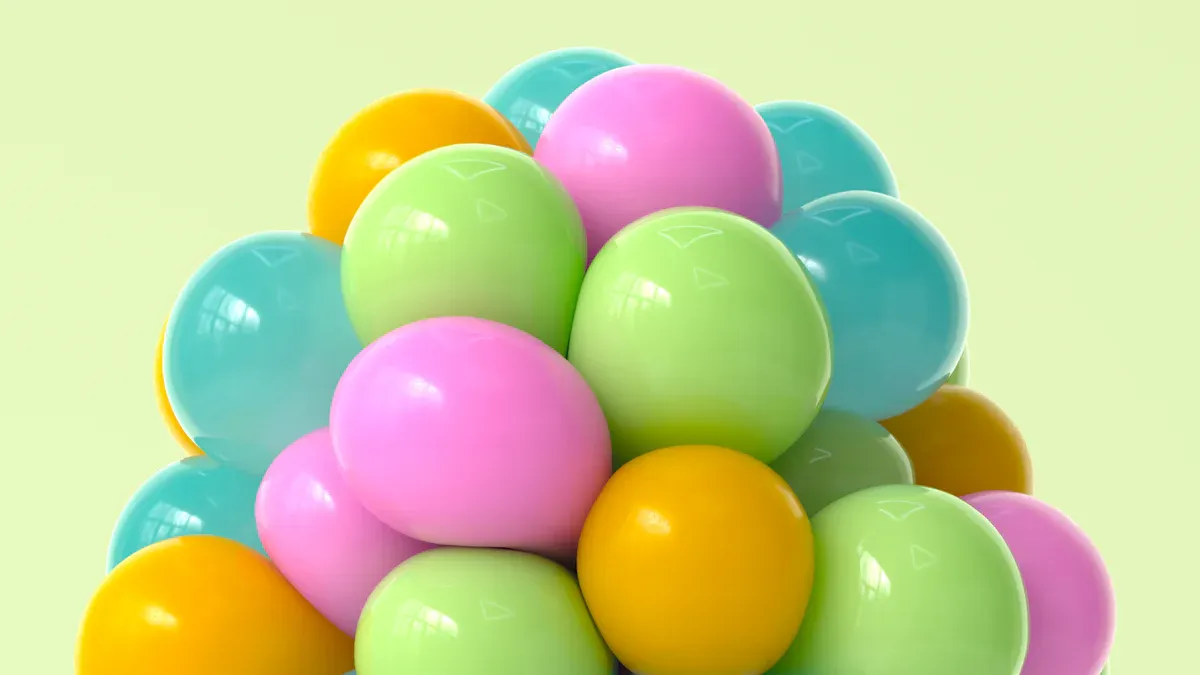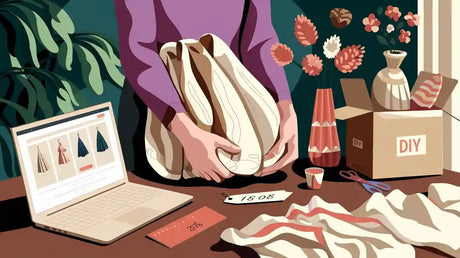
Balloons are interesting items made of latex, rubber, or Mylar. Each material has a special use. Balloons made of latex are the most common, making up 75% of sales worldwide. Europe is the biggest buyer of these balloons made of latex, with China and Asia close behind.
Key Takeaways
There are three main types of balloons: latex, Mylar, and synthetic rubber. Each type is different and used for specific purposes.
Pick biodegradable balloons to be eco-friendly. They decompose naturally, unlike synthetic ones.
Always throw balloons away correctly to keep animals safe. Balloons can hurt animals if not disposed of properly.
Types of Materials Used to Make Balloons
Natural Latex and Its Features
Latex is a common material for making balloons. It comes from the sap of rubber trees, also called Hevea brasiliensis. This sap is collected in a way that doesn’t harm the trees, making it renewable. Latex balloons are stretchy, colorful, and hard to break. These qualities make them great for parties and decorations.
Latex is also strong and long-lasting. It can be blown up to different sizes without losing its shape. Latex is biodegradable, meaning it can break down naturally. But, studies show latex balloons don’t break down as fast as some companies claim. Chemicals used in production can slow this process, which can harm the environment. Even so, latex is still popular because it’s useful and eco-friendly.
Property |
Description |
|---|---|
Renewable |
Comes from rubber tree sap, collected in a sustainable way. |
Elasticity |
Very stretchy and useful for many purposes. |
Durability |
Strong and lasts a long time when used. |
Biodegradability |
Breaks down naturally, offering an eco-friendly option. |
Synthetic Rubber and Its Uses
Synthetic rubber is another material for making balloons. Unlike latex, it is made from petroleum-based chemicals. It is cheaper and easy to produce in large amounts. These balloons are often used in factories or for special tasks.
The demand for synthetic rubber balloons is growing. In 2023, the market was worth $2.11 billion. By 2032, it is expected to grow to $3.04 billion, with a yearly growth rate of 4.15%. This shows how important synthetic rubber is for balloon production.
Year |
Market Size (USD Billion) |
CAGR (%) |
|---|---|---|
2023 |
2.11 |
N/A |
2024 |
2.19 |
N/A |
2032 |
3.04 |
4.15 |
Synthetic rubber balloons are tough and don’t wear out easily. They are good for outdoor events or places where strength matters. However, they don’t break down naturally, making them less eco-friendly than latex balloons.
Mylar Balloons and Their Features
Mylar balloons are made from a shiny material called PET (polyethylene terephthalate). This gives them a metallic look, perfect for birthdays and weddings. Mylar balloons last longer than latex ones and hold helium better. This makes them great for long-lasting decorations.
Mylar balloons can also be customized. They come in many shapes, sizes, and designs, including printed messages. But, mylar balloons don’t break down naturally. If not thrown away properly, they can harm the environment. Still, their durability and shiny look make them popular for celebrations.
Eco-Friendly Balloon Materials
As people care more about the planet, eco-friendly balloons are becoming popular. These balloons are made from natural materials like cornstarch. They break down naturally and are better for the environment than latex or synthetic rubber.
However, studies show biodegradable balloons don’t always break down quickly. Research in the Journal of Hazardous Materials found that after 16 weeks, many biodegradable balloons were still mostly intact. This can harm animals and nature. More work is needed to make truly eco-friendly balloons.
If you want to help the environment, try using biodegradable balloons or other green options. They aren’t perfect but are a step toward better celebrations.
How Balloons Are Made
How Latex Balloons Are Made
Latex balloons start with sap from rubber trees. Workers collect the sap without hurting the trees. The sap is cleaned to remove dirt and mixed with colors. This makes the balloons bright and colorful.
Balloon-shaped molds are dipped into the liquid latex. These molds are heated first so the latex sticks evenly. The molds spin to spread the latex smoothly. After drying, the balloons are heated to make them stretchy and strong. Finally, they are removed, cleaned, and powdered to stop them from sticking.
This process makes latex balloons flexible and colorful. But chemicals used in production can slow their breakdown. Always throw away balloons properly to protect the environment.
How Mylar Balloons Are Made
Mylar balloons are made from a shiny plastic called PET. This plastic is covered with a thin metal layer, giving it a metallic look.
Large sheets of PET are cut into shapes like stars or hearts. Two sheets are sealed together, leaving a small hole for air. Before sealing, designs or messages are printed on the balloons. This makes them colorful and unique.
Mylar balloons don’t break down naturally. But they last longer and hold helium well. Reusing them can help reduce waste.
New Technology in Balloon Making
Balloon-making has improved a lot recently. Many companies now use materials that break down naturally. Biodegradable latex and foil balloons are becoming more common. Digital printing lets balloons have clear pictures and custom designs.
Factories now use smart machines to make balloons. These machines use AI to check and fix problems during production. This saves time and makes better balloons. Faster production also lowers costs for buyers.
Here’s a summary of new balloon-making improvements:
Improvement Type |
Description |
|---|---|
Biodegradable Materials |
New latex and foil balloons that break down naturally. |
Customization Services |
More options for personalized balloon designs. |
Digital Printing Technologies |
Clear and colorful designs using advanced printing methods. |
Strategic Partnerships |
Working with stores and event planners for better distribution. |
Regulatory Compliance |
Meeting rules for safety and environmental care. |
These changes make balloons better and safer for the planet. You now have more choices and better-quality balloons to enjoy.
Types of Balloons and Their Uses

Latex Balloons: Features and Best Uses
Latex balloons are very popular for parties and events. They are made from natural rubber latex, which is stretchy and affordable. These balloons come in many colors and sizes, making them great for decorations. People use them for birthdays, weddings, and other celebrations at home. You can inflate them to different sizes for creative designs.
Latex balloons are eco-friendly because they can break down naturally. But, they don’t decompose as fast as some think, especially in certain conditions. Even so, they are cheap and flexible, making them a top choice for personal and business use.
Description |
Demand Drivers |
|
|---|---|---|
Commercial |
Used for big events like trade shows and corporate parties. |
Need for colorful decorations to attract attention and promote brands. |
Residential |
Perfect for birthdays, anniversaries, and small celebrations at home. |
Affordable and widely used for home-based parties. |
Specialty |
Unique shapes and designs for fancy events. |
People spend more on special decorations influenced by social media trends. |
Mylar Balloons: Features and Best Uses
Mylar balloons are made from a shiny material called PET. They look metallic and last longer than latex balloons. These balloons hold helium for up to two weeks, making them great for multi-day events like festivals or company parties.
Mylar balloons come in many shapes, sizes, and designs, such as letters or numbers. Their shiny surface adds elegance, making them perfect for weddings or formal events. However, they don’t break down naturally, so it’s important to throw them away properly to protect the environment.
Feature |
Mylar Balloons |
Latex Balloons |
|---|---|---|
Durability |
Holds helium for 12-24 hours |
|
Appearance |
Shiny and metallic |
Matte or slightly glossy |
Choosing the Right Balloon for Your Needs
Think about durability, looks, and the environment when picking balloons. Latex balloons are great for short events and colorful decorations. Mylar balloons are better for long-lasting displays and formal occasions.
If you care about the planet, choose biodegradable latex balloons or eco-friendly options. Social media trends also affect choices, with many people liking custom designs for better photos. Whether it’s a birthday or a business event, knowing about balloon types helps you decide.
Tip: For business events, order custom mylar balloons with logos to promote your brand.
Balloons made of latex, Mylar, and synthetic rubber have different uses. Latex balloons are stretchy and cheap but break down slowly. Mylar balloons are shiny and last longer but aren’t eco-friendly. Synthetic rubber balloons are strong but add to pollution. Every year, millions of balloons harm sea animals. Latex and plastic pieces are dangerous for marine life.
New biodegradable materials aim to help the environment. But these balloons still take time to break down. Wildlife can still be harmed by them. Choosing greener options and throwing balloons away properly can reduce damage.
Note: Sea animals like turtles and birds often eat balloons. This can kill them. Always throw balloons away carefully to protect nature.
FAQ
Why are latex balloons biodegradable?
Latex balloons are made from rubber tree sap. This natural material can break down over time, unlike synthetic ones.
How long do latex balloons stay inflated?
Latex balloons usually stay filled for 12-24 hours. Helium-filled ones may deflate faster because helium is very light.
Do balloons hurt the environment?
Balloons can harm animals and nature if not thrown away properly. Always dispose of them carefully to protect the planet.








